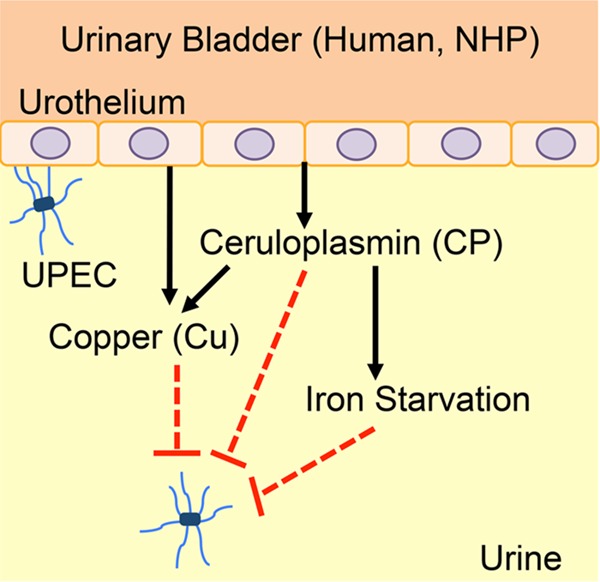FIG 12.

Model of the role of Cu in UTI. In humans and nonhuman primates (NHP), Cu is mobilized to urine during UTI. Ceruloplasmin is the molecular source of Cu in urine. Cu and ceruloplasmin exert direct and indirect effects to limit the growth of UPEC. Ceruloplasmin promotes the loading of iron onto apotransferrin to generate holotransferrin. Holotransferrin is then internalized by the urothelial cells during UTI, resulting in iron starvation of UPEC. Mobilization of Cu to urine during UTI limits bacterial growth by direct toxicity and also by hampering the bioavailability of iron, an essential nutrient.
